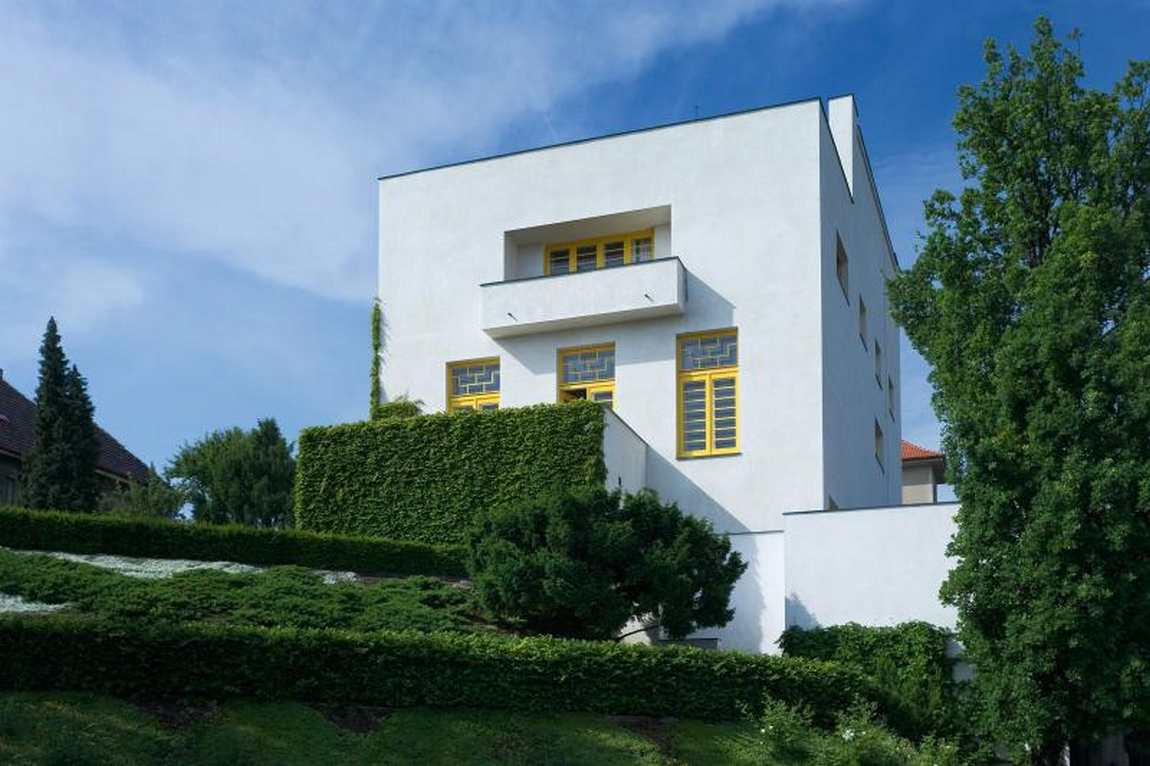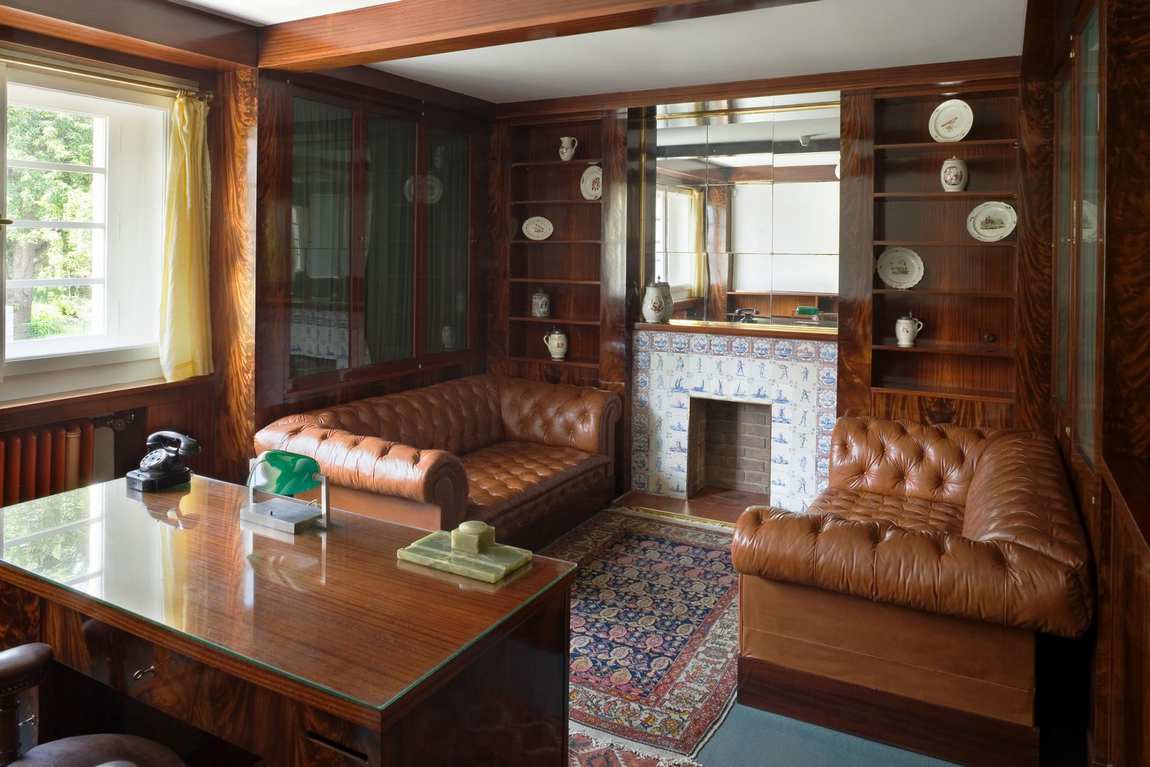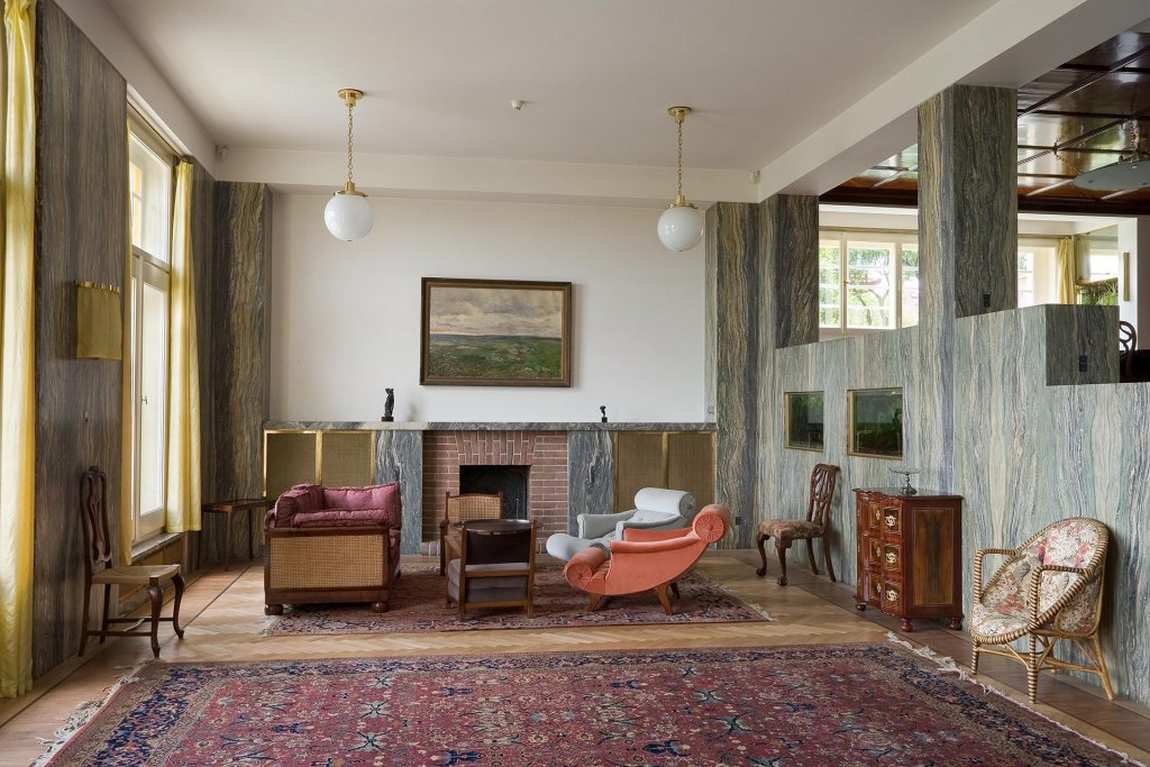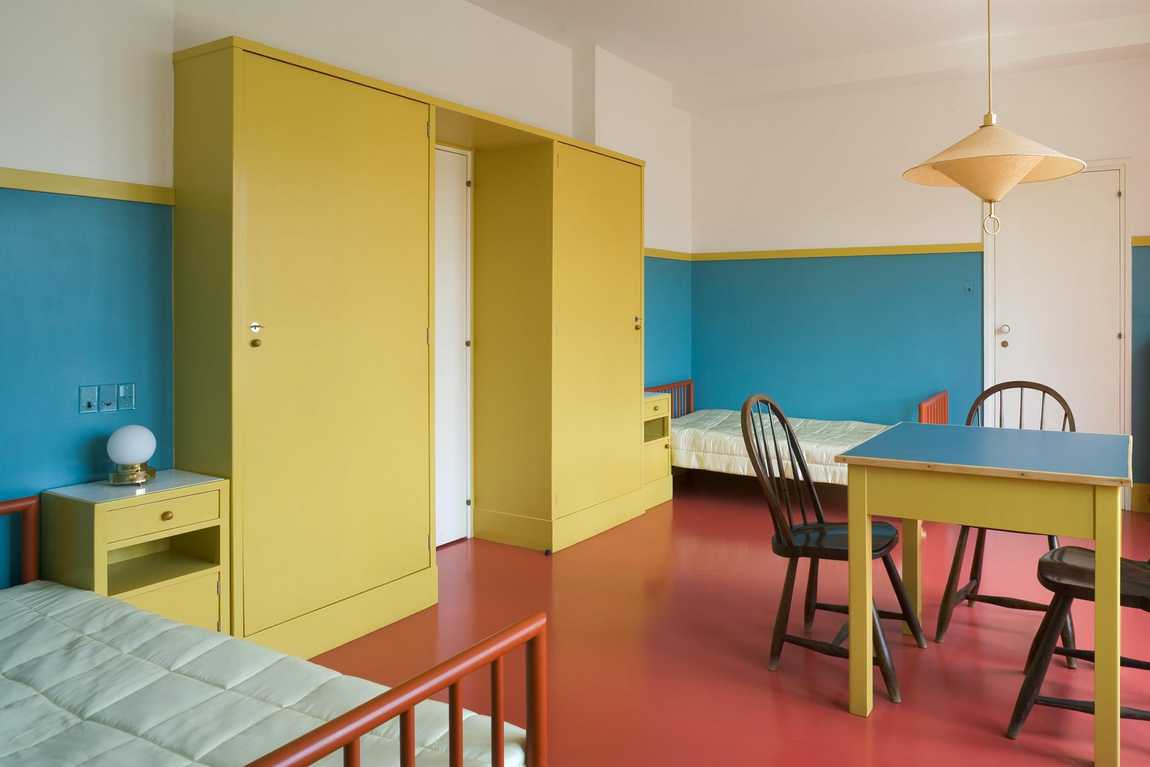- What is Villa Müller Known for?
- Why It Might Be Interesting for Kids
- Architectural Significance
- Design and Aesthetics
- Historical Context
- Restoration and Preservation
- Function and Symbolic Importance
- Living Experience
- Architectural Innovations
- Influence and Legacy
- Best Time to Visit
- How Long Does It Take to Attend?
- Is Villa Müller Worth Visiting?
Villa Müller stands as an exemplary piece of modernist architecture that strikes a chord with families interested in the confluence of design and history. Designed by the renowned Adolf Loos, a pioneer of the modern architectural movement, this house defies its residential purpose, becoming a cultural beacon that fascinates adults and sparks the imaginations of younger visitors. The building's unique Raumlplan concept, an innovative spatial design where each room has a distinct purpose and character, aligns seamlessly with family life's practical needs and aesthetic curiosities.
A visit to Villa Müller offers a remarkable journey through time. It opens a window into the lifestyle of the early 20th century, tailored by visionary minds. As families explore the simple yet sophisticated cube-shaped structure with its austere facades, they discover a harmonious interior where light, space, and functionality play a leading role. Adolf Loos's masterpiece in Prague provides insights into the transformative architectural ideas of the era but also presents a tranquil environment for families to enjoy together, away from the bustling city streets.
It encapsulates the ethos of a modernist architect whose work reverberated beyond the borders of Prague and influenced the discourse of residential design worldwide. Immersing in the meticulously planned arrangement of the villa, one understands why Loos is hailed for blending utility with elegance, making this historic house a compelling attraction for family excursions that prioritize cultural enrichment. Whether it's to appreciate the foresight of Adolf Loos or to find inspiration in the villa's timeless design, a family outing to this place promises an educational and memorable experience for parents and children.
Contents
 Photo: https://adolfloos.cz/cs/mullerova-vila
Photo: https://adolfloos.cz/cs/mullerova-vila
What is Villa Müller Known for?
Villa Müller stands as a testament to modernist architecture, capturing the innovation and functional design that was well ahead of its time. Built in Prague between 1928 and 1930, the villa is appreciated for its use of Adolf Loos' Raumplan — an ingenious concept of spatial arrangement.
- Architectural Genius: The design gracefully applies Raumplan, focusing on the relationships between interior spaces rather than the exterior form. Each room is distinct in size and level, tailored to its function and significance, creating an intricate play of spaces.
- Cultural Heritage: It's not just an architectural treasure; this building is a piece of cultural heritage, encapsulating the ethos of the early 20th century. Families can explore how the mansion intertwines the private and the shared, making it an endearing educational excursion.
- Timeless Aesthetics: Despite its construction nearly a century ago, the villa maintains a timeless appeal. The clean lines and unadorned surfaces speak to a modern sensibility that continues to enchant visitors of all ages.
The building is notable for the seamless connection of its functional areas. Its design philosophy emphasizes simple and revolutionary practicality, setting a standard in modern architecture that many contemporary designers still hold in high regard.
Families curious about architectural innovation and historical elegance will find this place extremely engaging, with its thoughtful organization catering to adults and children alike.
Why It Might Be Interesting for Kids
While it might not be the first venue one thinks of for a family outing, several features make it a fascinating destination for children, especially those aged 7 and above, who can appreciate a bit of history wrapped in an interactive experience.
- An Architectural Time Machine: Kids can look back and see how people lived in the early 20th century. Its design is a physical lesson in history and culture.
- Scavenger Hunt Potential: The unique layout and nooks created by Loos’ Raumplan theory can turn a tour into an adventurous game as children become detectives discovering the secrets of each room's design.
- Contrasting Spaces: They can directly experience the contrast between the minimalist design and the more ornate buildings in the surrounding area, sparking conversations about architectural styles.
This visit is particularly stimulating for children interested in building and design. This place can ignite a child’s curiosity in architecture fundamentals and the evolution of living spaces through the decades. Plus, exploring such a modernist space can be a tactile experience younger visitors might find surprisingly engaging.
Experiencing this sight could be a delightful way to introduce kids to architecture in a hands-on environment that feels educational and entertaining. For families exploring Prague, adding Villa Müller to the itinerary might just strike the perfect balance between a learning opportunity and an unexpected adventure in one of the city’s hidden gems.
Architectural Significance
 Photo: https://adolfloos.cz/cs/mullerova-vila
Photo: https://adolfloos.cz/cs/mullerova-vila
Exploring the remarkable sight reveals an insightful journey through history, showcasing the ingenious blend of functionalism and luxury. This section elaborates on its architectural significance, which is not only a reflection of architect's visionary ideas but also a symbol of the evolution of modern architecture.
Influence of Adolf Loos
Architect Adolf Loos played a pivotal role in the modern architecture movement with his forward-thinking designs. Villa Müller exemplifies his rejection of ornamental excess and his emphasis on simplicity and practicality.
Modern Architecture and Raumplan Concept
Loos's Raumplan concept — a spatial design that organizes rooms on varying levels and heights — gives Villa Müller a unique flow and character. It's a masterful use of interior space that enhances one's experience as they move through the home, making it especially intriguing for families to explore together.
Comparison With Contemporaries
While contemporaries like Mies van der Rohe and Le Corbusier pioneered modern architecture, this mansion stands apart. It contrasts their use of open-plan spaces instead of offering an intimate and hierarchical series of rooms, which resonates with the organic architecture of Frank Lloyd Wright.
Design and Aesthetics
 Photo: https://adolfloos.cz/cs/mullerova-vila
Photo: https://adolfloos.cz/cs/mullerova-vila
Known as an innovative landmark of early modernist architecture, this building embodies Adolf Loos's acclaimed principle, "Ornament and Crime," which foregrounds the beauty of unadorned functionality. This architectural masterpiece integrates progressive aesthetics with practical living spaces.
Exterior Design
For the exterior of the Villa, Loos designed a white, cubic facade that exhibits a striking simplicity, deviating from ornate architectural trends. Its asymmetrical composition comprises sharp cubic forms, creating a modernist silhouette against the Prague skyline. Visitors viewing the villa from the outside get an immediate sense of the modern design ethos that Loos championed.
Interior Arrangement
The building unveils Loos's signature Raumplan, an innovative layout featuring interconnected spaces of varying sizes and functions. Each room possesses its character, tailored to differences in daylight, intimacy, and purpose, providing a distinct experience as residents and guests move through these meticulously organized living spaces.
Clean lines, functional simplicity, and a harmonious blend of form and function characterize the spaces within the villa. Open floor plans create a sense of spaciousness, allowing natural light to permeate the interiors.
Striking features include the strategic placement of windows and framing of picturesque views of the surrounding landscape. The interior design emphasizes the use of high-quality materials, with an emphasis on functionality and comfort. Loos' meticulous attention to detail is evident in the carefully crafted built-in furniture integrated into the architectural framework.
The interior arrangement encourages a seamless, intuitive, and comforting flow, especially for families with children.
Material Usage and Color Scheme
Loos's adept use of materials accentuates the elegance and functionality. Surfaces range from the tactile warmth of wood to the incredible luxury of marble, offering a tactile journey for visitors. The color palette complements its materials with soft, neutral tones that imbue the space with a tranquil and welcoming ambiance. Touches of color come alive in fabrics and furnishings, including sumptuous silk surfaces, creating a serene and stimulating environment for all ages.
Historical Context
 Photo:https://www.facebook.com/muzeumprahy
Photo:https://www.facebook.com/muzeumprahy
Nestled in the lush, upscale neighborhood of Střešovice, this mansion is a testament to the architectural innovation of the early 20th century and the cultural tapestry of Prague. This section illuminates the backdrop against this modernist gem's conception and the cultural flourish it brought to the Czech capital.
Background of František Müller
In the autumn of 1928, Frantisek Muller, a partner in the successful building firm Kapsa & Muller, commissioned Adolf Loos and his associate, architect Karel Lhota, to design the new house for the Muller family. Beyond his business acumen, Müller was a patron of architecture and had a keen interest in the cultural scene of the Czech Republic. His preference for modernist architecture was a driving force behind the commissioning of the Villa in the serene quarter of Střešovice, a district often described as the "city of villas."
For eighteen years, the residence was the cherished abode of the couple until the Communists asserted control in 1948. Subsequently, in 1968, following the demise of Milada Müllerová, the most critical parts of the Villa's furnishings and collections found a new home through acquisition by the Museum of Applied Arts and the National Gallery. This transition culminated in the official designation of the Villa as a Cultural Monument of the Czechoslovak Republic. After the dissipation of Communist influence in 1989, custodianship of the estate was duly transferred to Eva Maternová, the Müllers' esteemed daughter.
In 1995 the Villa Müller became a part of the Prague City Museum.
Cultural Impact in Prague
Acting as a symbol of modernity, this sight significantly influenced the cultural life in Prague. Its design, rooted in the ideas of renowned architect Adolf Loos, challenged the traditional ornamental style of the era. The mansion resonated with Prague's avant-garde community by showcasing bold simplicity and functional aesthetics.
Adjacent to historic icons like Prague Castle, this building differed from the Gothic and Baroque styles that dominate the city skyline. Its presence in Prague's cultural landscape illustrated a dialogue between the old and new, a mark of the city's evolving identity.
Not only did Villa Müller enhance the architectural diversity of the city, but through its very walls, it became an enclave that encouraged the appreciation of contemporary art and design among residents and visitors — families today can revel in its timeless appeal during their excursions through Prague's cultural corridor.
Restoration and Preservation
The Villa Müller, an architectural gem in Prague, has undergone a meticulous restoration to preserve its modernist features. Families exploring this historic landmark can appreciate the efforts to maintain the building's original 1930s splendor.
Restoration Efforts
After surviving the wear of time and political shifts, including the era under the Communist government, restoring the building to its former glory became crucial.
In the late 1990s, a restoration project with an eye for authenticity brought the building back to life, ensuring that every detail, from the color schemes to the furniture placement, accurately reflected Loos's original vision. This painstaking process, which you can learn more about at The Prague City Museum - Villa Müller, sought to undo the alterations made over the years, especially those during the communist era that did not align with the building's Modernist roots.
It was restored and transformed into a museum that now welcomes families, offering a chance to step back into a defining moment in architectural history. The meticulous restoration ensures that the building remains a vivid cultural touchpoint for Prague and the world of architecture, a tangible connection to an era when Modernism was reshaping the global landscape.
Function and Symbolic Importance
 Photo: https://adolfloos.cz/cs/mullerova-vila
Photo: https://adolfloos.cz/cs/mullerova-vila
When exploring the remarkable Villa Muller, one can't help but notice how form meets function in every aspect of its design. This integration is particularly evident in how the Raumplan concept has been meticulously applied, emphasizing an economical use of space without compromising elegance.
Raumplan and Functionality
The Villa Muller is a quintessential example of Adolf Loos' innovative Raumplan approach, which translates to 'spatial plan.' This design philosophy rejects the traditional notion of divided floors for a dynamic arrangement of spaces. Each room is precisely designed to reflect its function, with varying ceiling heights that establish a sense of hierarchy and intimacy where needed. For instance, living spaces where the family congregates are more open and airy. At the same time, private areas like bedrooms are given a cozier ambiance with lower ceilings.
Economic Use of Space
Loos' architectural philosophy extends beyond mere aesthetics to efficiently use space. The Villa skillfully employs a minimalist design, eliminating unnecessary decoration and instead focusing on the strategic placement of load-bearing pillars. These pillars support the structure in a way that maximizes usable area. As a result, families can enjoy a home environment that is both spacious and functional, avoiding the clutter that often hinders family-oriented activities and daily living. This focus on the economy is also expressed in the multipurpose nature of some spaces, making the most of every square inch available.
Living Experience
Its masterful conception of space distinguishes Villa Müller, demonstrated through the clear distinction and careful crafting of private and public areas. Each meticulously designed room serves as an enclave of comfort and functionality.
Private vs. Public Spaces
The Raumplan concept developed by Adolf Loos is distinctly evident within the Villa Müller, where the segregation of private and public spaces serves aesthetic and practical purposes. The private quarters are intricately layered, offering the family a sanctuary away from the social zones. For instance, the library, often a peaceful retreat for contemplation, presents a tranquil spot contrasted against the lively dining room where guests are entertained.
Furnishings and Comfort
Comfortable furniture throughout the mansion is tailored to family life, ensuring each piece isn't just a work of art but a node of relaxation. In the living room and private spaces, plush sofas and chairs were often situated around a warming fireplace — a true centerpiece for familial gatherings. Not only does this elevate the comfort of the residence, but it also crafts a welcoming environment in which both adults and children can unwind.
Architectural Innovations
The Villa Müller is a testament to the innovative architectural designs of the early modernist era, mainly due to its unique utilization of space and the seamless flow between exterior and interior environments.
Spiral Staircase and Spatial Dynamics
At the heart of Villa Müller’s architectural innovation is its spiral staircase, a feature that connects the multi-level parts of the house and enhances the spatial dynamics. This central element acts as an anchor, around which the rooms fluidly unfold in what Adolf Loos termed the Raumplan - a design philosophy prioritizing spatial experience over formal symmetry. The staircase coils upward, carefully crafted to create an architectural promenade that invites visitors on a journey through the varying levels, each with its distinct function and atmosphere.
Integration of Outdoor and Indoor Spaces
The clever integration of outdoor and indoor spaces in Villa Müller blurs the traditional boundaries between the two. Terraces extend from living areas, offering scenic views and openness. The design thoughtfully incorporates these terraces at strategic points, allowing for natural light to permeate the interior and for the family to enjoy the luxury of Prague's vistas as an extension of their living environment. This synergy between interior and exterior grants the mansion a harmonious character, particularly suited for families with kids who value interconnected living spaces that accommodate active play and tranquil relaxation.
Influence and Legacy
Villa's lasting global influence showcases high-quality design, elevating it to a masterpiece in modern architecture.
Symbolic Importance and Global Influence
Villa Müller in Prague is recognized as an architectural jewel that dramatically altered the landscape of modern architecture. Designed by Adolf Loos in 1930, this home was far more than a private residence; it became a symbol of the move toward simplicity and functionality in design. By shunning ornamentation, the villa championed the notion that form should follow function, a philosophy that resonated worldwide.
As the embodiment of Loos's spatial plan, the mansion achieves a harmonious balance of interconnected and clearly defined spaces, with each room purposefully crafted to suit its function. Using the raumplan, Loos's technique for organizing interior spaces on various levels allows for an intuitive flow well ahead of time.
Masterfully constructed with a focus on high-quality materials and meticulous attention to detail, Villa Müller's influence extends beyond Prague's borders. Architects and enthusiasts from around the globe make pilgrimages to this site to witness firsthand the impact of Loos's vision.
The villa's enduring legacy inspires contemporary architects, emphasizing the power of clean lines and the beauty of simplicity. For families exploring Prague's rich architectural landscape, the Villa Müller presents an exquisite example of a home that transcends time, educating and enchanting both adults and children with its elegant fluidity and historical significance.
Best Time to Visit
When planning a visit to the iconic Villa Müller with children, timing is essential to ensure a pleasant and engaging experience. Recognized as a jewel of modernist architecture, this site offers a unique glimpse into design and history that the whole family can enjoy.
It is generally open to the public from April to October on Tuesdays, Thursdays, Saturdays, and Sundays, with tours beginning at 9 am, 11 am, 1 pm, 3 pm, and 5 pm. For families traveling with kids, a morning tour around 9 am tends to be the perfect choice, as it is less crowded and children are more attentive. Families can savor the ambiance and design during these times without the rush.
April, May, and September strike an ideal balance between pleasant weather and lower visitor numbers, making them the most suitable for a family outing to Villa Müller. The weather is typically mild, enhancing the comfort of your visit indoors and in the surroundings.
For those visiting from November to December and from January to March, the villa adapts its schedule, opening on Tuesdays, Thursdays, Saturdays, and Sundays with tours at 10 am, 12 noon, 2 pm, and 4 pm. Families must note that Villa Müller operates on a reduced schedule during these months.
To ensure a seamless visit, guests are encouraged to check the Villa Müller official website for the most current opening hours and any special events that might delight the children. Booking in advance is highly recommended as it secures your spot and helps plan the rest of the day for the family.
How Long Does It Take to Attend?
Visiting this celebrated example of modernist architecture on Prague's landscape, is an enriching experience. Families will find it manages to engage adults and children with its distinctive design and historical significance. The duration of the visit can vary depending on the level of interest, but here are some guidelines to help plan the day.
Guided Tours
Typically, a guided tour lasts about 60 minutes. These tours provide a deep insight into the villa's history and architecture. They are led by knowledgeable guides, making them both informative and captivating for visitors of all ages.
Self-Guided Exploration
For those who prefer a more leisurely pace or have curious youngsters who like to explore, it is advisable to allocate at least 1.5 to 2 hours. This time allows guests to absorb the villa's atmosphere and admire the details at their own pace. Families are encouraged to reserve tour spots in advance to ensure a smooth visit, particularly during peak visiting hours. Late afternoons often offer a quieter experience.
Post-Visit Reflection
Allow some time post-visit to relax and discuss the beautiful spaces of Villa Müller, perhaps over a picnic in a nearby park. Children may enjoy sketching their favorite villa parts or creating their version of the Raumplan style they witnessed.
While the visit can be flexible, families should plan for at least an hour to truly appreciate this remarkable architectural history.
Is Villa Müller Worth Visiting?
For families planning a trip to Prague, Villa Müller is a fascinating destination. This architectural marvel, designed by Adolf Loos between 1928 and 1930 for František Müller and his family, epitomizes the pinnacle of modernist design.
Visitors can immerse themselves in the history and unique design during the guided tours. It is essential to note that the house is not barrier-free. Therefore, it may pose challenges for families with small children or strollers.
Why Villa Müller appeals to families:
- Educational Value: The villa offers a tangible history lesson, allowing children to witness the evolution of architecture firsthand.
- Engaging Exploration: Each corner of the villa unfolds new design philosophies, captivating young minds interested in how spaces can shape our living experience.
- Cultural Enrichment: It presents a perfect opportunity to introduce children to the world of fine arts in an accessible manner.
Here are some practical details for visiting:
- Open Hours: The villa is open several days a week, but check current times on the official website.
- Location: Nestled in the quiet neighborhood of Střešovice, it provides a break from the bustling city center.
For families enthusiastic about architecture and history or those simply looking to uncover Prague's hidden gems, Villa Müller is undoubtedly worth the visit. Its serene atmosphere and architectural significance offer a distinctive experience unlike the typical tourist attractions.











